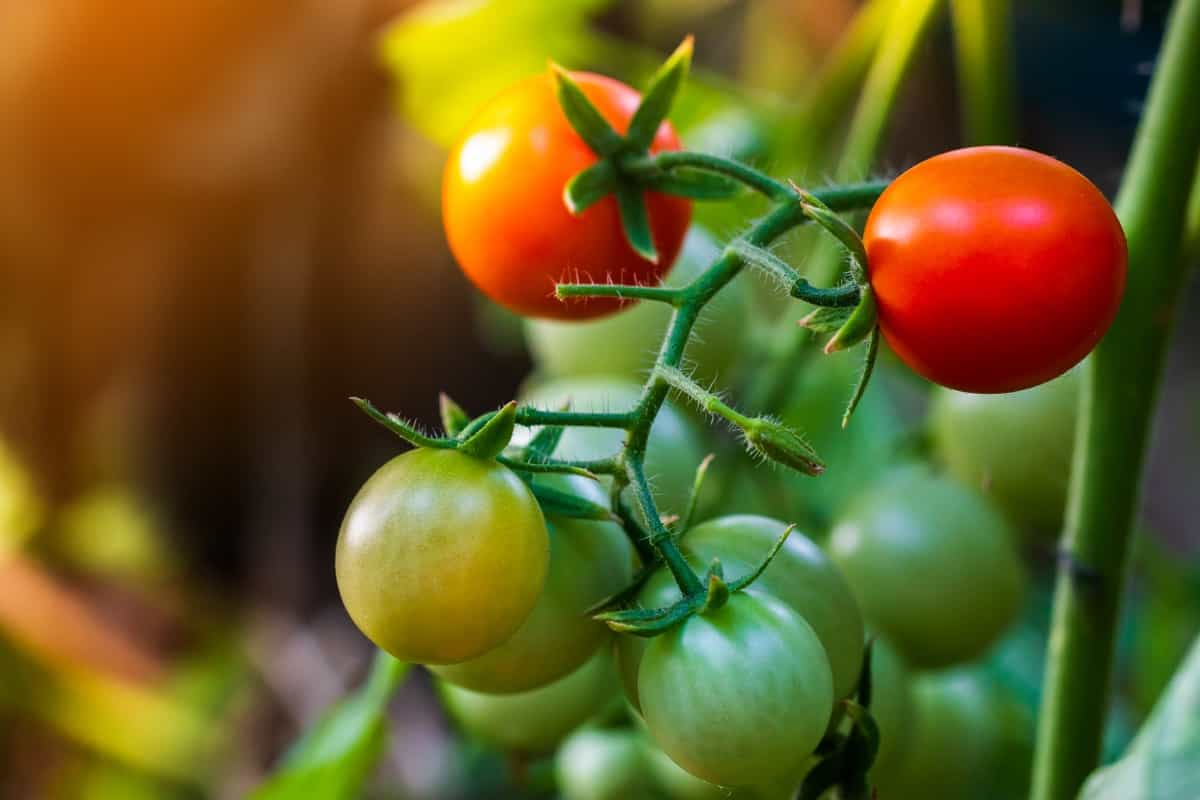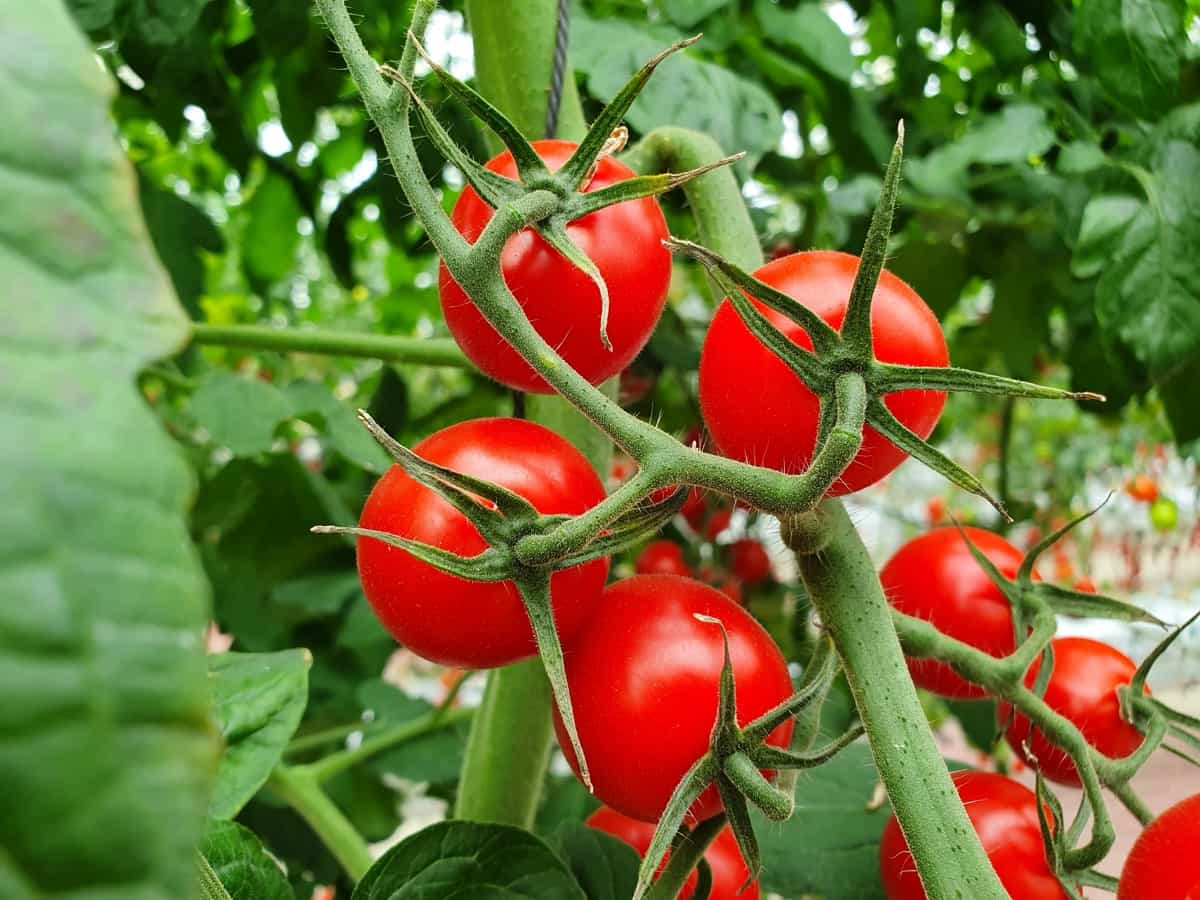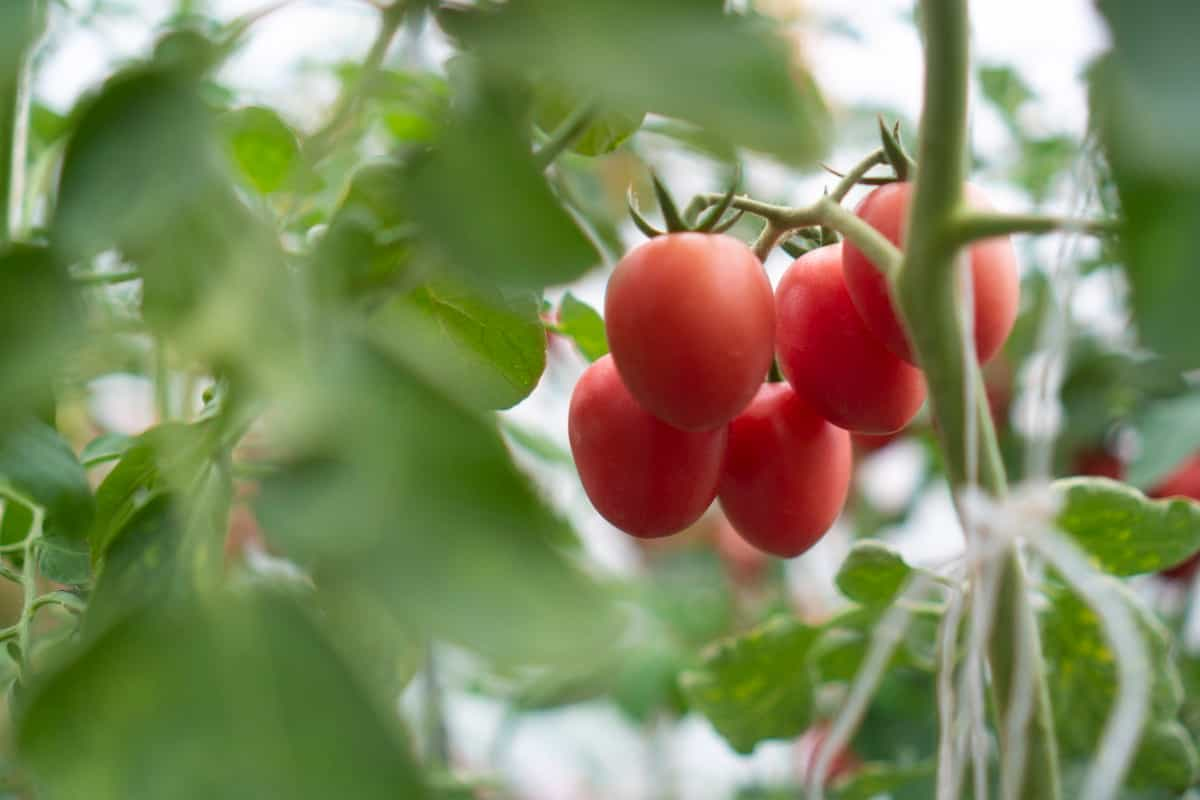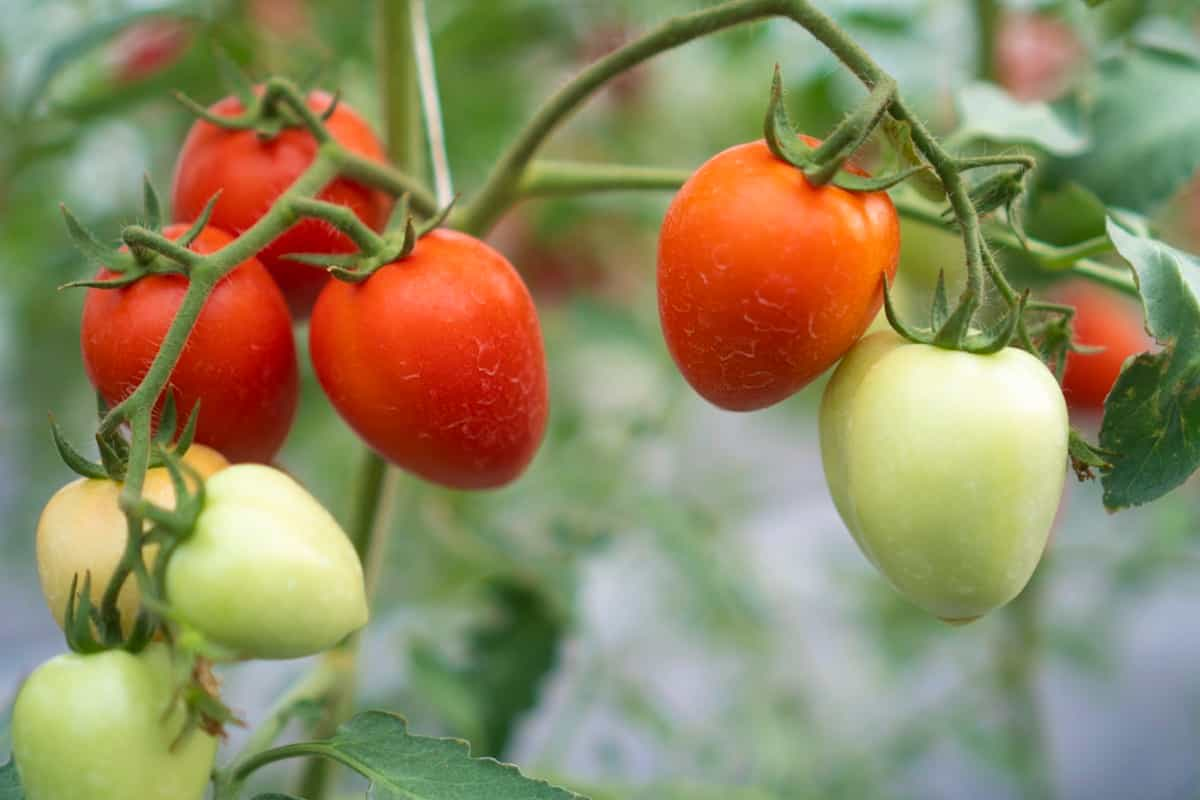Growing tomatoes hydroponically is a very effective technique with benefits such as higher yields and fewer issues with the soil. However, diseases and pests can still affect hydroponic tomato plants, like conventional soil-based cultivation. This post will discuss natural and organic ways to manage hydroponically grown tomatoes, examine the world of hydroponic tomato pests and diseases, and emphasize the value of making well-informed choices for your hydroponic garden.

How to Control Hydroponic Tomato Pests and Diseases Naturally
Introduction to Hydroponic Tomato Pests and Diseases
Hydroponic tomato plants face challenges from pests and diseases, including aphids, whiteflies, spider mites, and thrips. These insects cause damage, nutrient theft, and disease transmission. Fungal issues like powdery mildew and root rot are common in hydroponic systems. Identifying these threats early is crucial for maintaining a thriving hydroponic tomato garden, as they can cause significant damage and nutrient theft.
Identifying Common Pests and Diseases in Hydroponic Tomatoes
- Aphids: Tiny, soft-bodied insects that excrete honeydew, attracting sooty mold.
- Whiteflies: Small, white-winged insects that feed on leaves, causing interference with photosynthesis.
- Spider Mites: Invisible arachnids that cause stippling on leaves and fine webbing.
- Thrips: Slender, winged insects that feed on plant sap, causing distorted leaves and reduced growth.
- Powdery Mildew: Common fungal disease causing leaf yellowing and reduced photosynthesis.
- Root Rot: A disease affecting plant roots, causing decay, yellowing leaves, wilting, and reduced plant health.
Preventive Measures for Controlling Hydroponic Tomato Pests and Diseases
- Quarantine New Plants: Keep new plants separate and monitor for pests or diseases.
- Maintain Hygiene and Sanitation: Cleanliness deters pests and diseases. Remove dead or decaying plant material promptly.
- Proper Ventilation: Adequate airflow reduces humidity and minimizes fungal diseases. Use fans and ventilation systems.
- Temperature Control: Maintain optimal temperature and humidity for tomato health.
- Nutrient Solution Management: Balance nutrient solutions to prevent plant weakness and pest attraction. Invest in quality solutions and monitor their composition.
In case you missed it: How to Treat Tomato Damaging Diseases: Symptoms, Identification, and Control

Natural and Organic Treatments for Hydroponic Tomato Pests and Diseases
When pests and diseases threaten your hydroponic tomato garden, turning to natural and organic treatments is not only an environmentally friendly choice but also a sustainable approach that can effectively manage the issues while minimizing the impact on the ecosystem.
These treatments harness the power of nature to combat pests and diseases, ensuring your hydroponic tomatoes remain healthy and productive. Let’s delve deeper into several options for natural and organic treatments that can help you maintain the well-being of your hydroponic tomato plants and the surrounding environment.
Beneficial Insects for Pest Control in Hydroponic Tomato Systems
- Ladybugs: These insects are fierce predators of aphids. You can successfully manage aphid populations in your hydroponic system by releasing ladybugs.
- Predatory Mites: These microscopic arachnids consume spider mites and can aid in controlling their population. You can lessen the likelihood of spider mite infestations by keeping an environment favorable to predatory mites.
Companion Planting to Deter Pests in Hydroponic Tomato Gardens
Planting companion plants strategically around your tomatoes will help keep pests away. To lessen the need for chemical intervention and to create a healthier growth environment, several companion plants can repel or confound problems.
- Marigolds: Marigolds are well renowned for their aphid-repelling properties. Aphids may be discouraged from bothering your tomato plants by their vivid blossoms.
- Basil: The potent aroma that basil releases will help keep whiteflies away from your tomato plants. Planting basil next to your tomatoes will aid in lowering infestations of whiteflies.
Neem Oil: A Natural Solution for Hydroponic Tomato Pest Control
Neem oil, which is prepared from the neem tree, is an organic and natural way to keep pests out of hydroponic tomato systems. The components in neem oil disrupt the feeding and reproduction cycles of common problems like aphids, whiteflies, and spider mites.
- Blend neem oil with water according to the directions on the product.
- Apply a generous amount of neem oil solution to your tomato plants, paying particular attention to the undersides of the leaves, as this is where many pests hide.
- Apply again as necessary, but don’t apply too much at once as it could damage helpful insects.
Using Essential Oils as a Natural Defense Against Hydroponic Tomato Pests
In hydroponic gardening, essential oils have become increasingly popular as all-natural pest deterrents. Without using artificial pesticides, several essential oils, such as lavender, peppermint, and rosemary, can be used to repel insects.
- In a spray bottle, combine a few drops of the preferred essential oil with water.
- For the oil to be distributed evenly, give the mixture a good shake.
- Apply the blend to your tomato plants, particularly to regions where pests will likely settle.
- Reapply as necessary, particularly following irrigation or rain.
Homemade Remedies for Controlling Hydroponic Tomato Pests and Diseases
You can create homemade remedies to tackle pests and diseases naturally. These remedies are often cost-effective but may require more frequent application compared to commercial solutions.
In case you missed it: Bacterial Spot Management in Tomato: Disease Symptoms, Treatment, Chemical, Biological, Natural, and Organic Control

Homemade Pest Repellent Spray
Ingredients
- 1 quart (1 liter) of water
- One teaspoon of mild liquid dish soap
- One teaspoon of cayenne pepper (or hot pepper sauce)
Instruction
- Mix the water, liquid dish soap, and cayenne pepper in a spray container.
- To guarantee a thorough mixing of the contents, give it a good shake.
To use
- Spray the mixture directly on your tomato plants, focusing on areas with pest infestations.
- Reapply as needed, especially after rain or watering.
Maintaining Proper Hygiene and Sanitation in Hydroponic Tomato Systems
In hydroponic systems, sanitation and hygiene are essential for controlling pests and diseases. To stop the spread of infections and problems, give your hydroponic system, tools, and containers a routine cleaning and disinfection. Maintaining good cleanliness creates a wholesome developing environment and lessens the possibility of reoccurring problems.
- Regularly clean equipment to prevent biofilm, algae, and pathogen buildup.
- Remove dead or decaying plant material to prevent pest breeding.
- Sterilize tools and containers before use.
- Regularly check and adjust pH and nutrient levels to prevent stress and disease vulnerability.
Integrated Pest Management Strategies for Hydroponic Tomato Production
Integrated Pest Management (IPM) is a holistic approach to managing pests and diseases in hydroponic tomato production. IPM combines various pest control methods to maintain a balanced ecosystem in your hydroponic garden. It emphasizes minimizing the environmental impact while effectively controlling pests and diseases.
- Regular inspection for pest and disease signs.
- Implement preventive measures like quarantine, hygiene, and proper ventilation.
- Use natural and organic treatments like beneficial insects, companion planting, neem, and essential oils.
- Consider chemical interventions only when other methods are ineffective, or a pest or disease outbreak threatens the entire crop.
- Continuously assess and adjust pest management strategies.
Frequently Asked Questions (FAQs) on Hydroponic Tomato Pests and Diseases
What Are the Common Pests That Affect Hydroponic Tomato Plants, And How Can I Control Them?
Common pests in hydroponic tomato systems include aphids, whiteflies, spider mites, and thrips. You can control them through regular monitoring, introducing beneficial insects like ladybugs or predatory mites, and using insecticidal soaps or neem oil sprays.
How Can I Prevent or Manage Fungal Diseases in Hydroponic Tomato Crops?
To prevent fungal diseases in hydroponic tomato plants, maintain proper air circulation humidity, avoid overwatering, and use hydroponic-specific fungicides.
In case you missed it: Bacterial Canker Management in Tomato: Symptoms, Treatment, Chemical, Biological, Natural, and Organic Control

What Are the Indicators of Nutrient Deficits in Tomato Plants Grown Hydroponically, And How Can I Rectify Them?
Signs of nutrient deficiencies in hydroponic tomatoes may include yellowing leaves or stunted growth. To address them, regularly check and adjust your nutrient solution’s pH and EC levels. Consult a hydroponic nutrient guide to ensure all essential nutrients are supplied to the plants.
Conclusion
Managing pests and diseases in hydroponic tomato systems is challenging yet rewarding. By identifying threats, implementing preventive measures, and exploring natural and organic treatments, you can maintain a thriving garden without harsh chemicals. Balancing these strategies is crucial, considering trade-offs while considering plant and environmental health. With the right approach, you can enjoy a successful hydroponic tomato harvest.
- Beneficial Insects in Pest Management
- Natural Solutions for Pest Control in Flower Gardens
- Types of Fungicides Used in Agriculture
- Common Issues in the Fruit Development Stage of Pomegranate Farming
- Fruit Development Issues in Papaya: Easy Solutions and Treatment
- Soil-Borne Diseases and How to Protect Your Plants
- Practices to Prevent Disease Spread in the Garden
- From Wilted to Thriving: How to Treat Root Rot Naturally in Houseplants
- Natural Remedies to Cure Brown Spots on Fig Tree Leaves